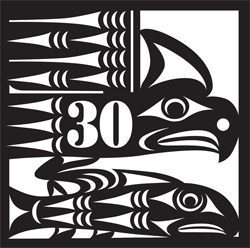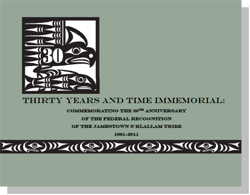 |
Thirty Years and Time Immemorial
Commemorating the 30th Anniversary of the
Official Federal Recognition
of the Jamestown S'Klallam Tribe
|
Browse
Document
Collection
|
The Decision to Seek Recognition
|
More than 100 years of unpredictable behavior from the United States government based on changing policies led the Jamestown SíKlallam Tribal Council to finally decide that having official recognition would be more secure than not having it.
When Lower Elwha organized under the Indian Reorganization Act in 1968, it was more apparent than ever that the Jamestown people were on their own. They had rejected decades of offers from the U.S. government Ė the Skokomish reservation in the 1850s; allotments at Quinault in the 1920s; moving to Port Angeles in the 1930s, and sharing recognition with the Lower Elwha in the 1960s.
The Jamestown SíKlallam people were entitled to ask for compensation through the Federal Indian Claims Commission. In 1966, the Tribe made a claim. But again, the Tribe found itself up against the issue of federal recognition. If they were not federally recognized, the government argued, they could not receive claims money.
In addition, treaty rights were being threatened. Although the Boldt Decision in 1974 affirmed Tribesí rights to take salmon, the court records and the United States position was inconsistent as to whether the Jamestown Tribe was a recognized Tribe. Without additional clarification by the United States that Jamestown was federally recognized, the Tribe faced opposition from the government on the fisheries issue.
During the late 1960s, the Jamestown Tribal Council began to investigate what would be required to gain recognition. A Constitution and bylaws were the first documents required.
|
| |

|
A companion book to this exhibit,
Thirty Years and Time Immemorial; Commemorating the 30th Anniversary of the Official Federal Recognition of the Jamestown S'Klallam Tribe,
is available for purchase from
Northwest Native Expressions Gallery.
|
|
|